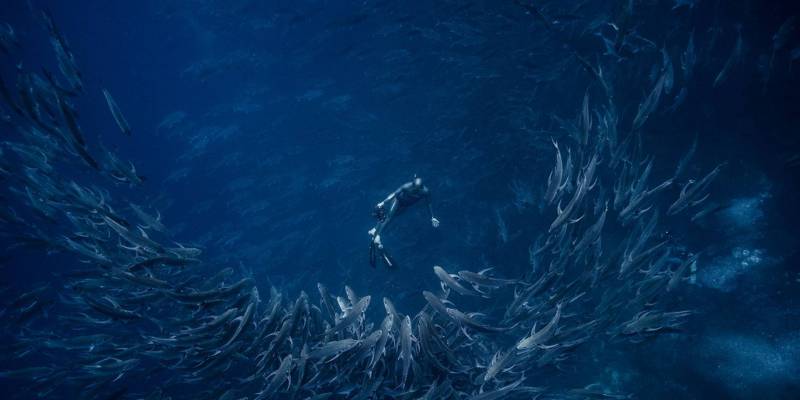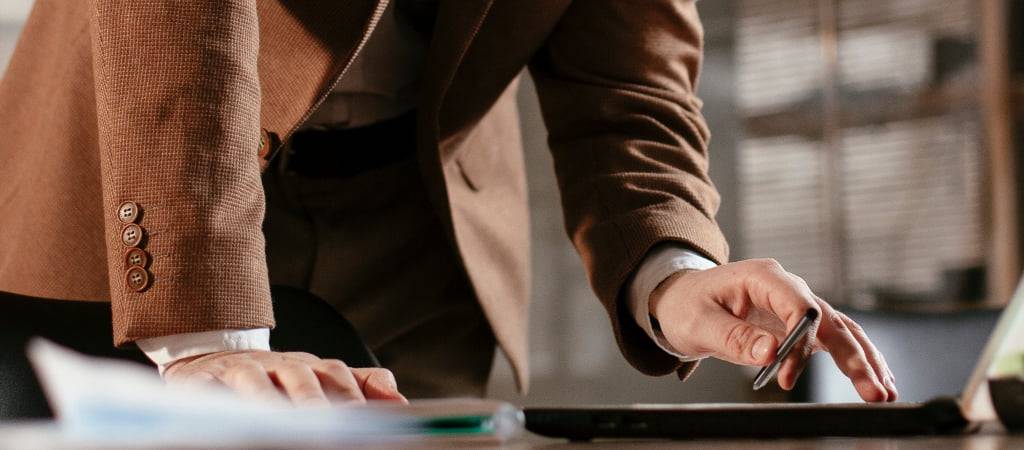
3 Nov 2017
The Ecuadorian documentary 'Galapagos Evolution' shows that apnea is the best technique to dive with hammerhead sharks.
Every visitor who sets foot in Galapagos knows at least two things. The first is that Charles Darwin discovered in these islands the theory of evolution to perceive that the same species of iguana, for example, had developed differently their legs or their mouth depending on whether they lived in Santa Cruz or San Cristóbal. The second is that the animals of the so-called Enchanted Islands do not flee, however savage they may be, from the human being because they do not feel threatened. Unesco declared the archipelago a World Heritage Site in 1978 and since then tourists have never stopped to dive among herds of hammerhead sharks, swim with sea lions or see centenary turtles. Therefore, there is always someone who, sooner or later, shares these two commandments with the visitors. But what the documentary Galapagos Evolution discovers, from the diver come to director Roberto Ochoa, is that you can go further in the relationship between man and wildlife. You can interact with sharks and whales without disturbing them. The young Ecuadorian, a fan of risk sports, began to be passionate about the underwater world until one day he discovered the key to evolution. If he wanted to get involved in the placid coming and going of the fish underwater, he had to be one of them. I mean, I should not breathe. Apnea then discovered a new experience that he had to share. With that idea rolling his head, he met one day with the son of Jacques-Yves Cousteau himself, a pioneer of diving and exploring the oceans. When Pierre-Yves Cousteau visited the Ecuadorian archipelago, Roberto Ochoa already knew nothing like a fish. Without air tank and for several minutes. First seduced Cousteau with the marine wealth of Galapagos to join in the project of the documentary. Then he showed that he also had to evolve. He had to overcome his father and leave the air tank on the boat if he really wanted to swim near the big mammals. "I'll try it," the Frenchman accepted before the camera without much expectation. "Apnea makes you one underwater," the Ecuadorian diver had told him. When leaving the water, there was nothing of disbelief in his face. He had never shot such close-up shots of hammerhead sharks that they walked, without the greatest concern, around him. The apnea, simple to learn according to Ochoa, allows to be under water several minutes only controlling the breathing and the mind. Up to three, with a single week of practice. The biologists and champions of that technique participating in Galapagos Evolution recorded 40 minutes of documentary during two weeks of underwater shooting. Without bubbles, it was possible to film countless planes of humans swimming in parallel to wild animals. It is what Ochoa highlights of his project. "When you go down with air, the bubbles scare away the animals. The same scene is repeated: when you approach a school of fish, it opens to surround you and if you look back, they are together again, "they explain in the film after one of the dives. But aside from hypnotizing scenes about marine beauty, Galapagos Evolution has a message. The archipelago hosts such diversity because it has been protecting the area of massive fishing, uncontrolled tourism and industrial activities for years. "Other areas of the world could recover the marine life they have lost if they did the same," says Ochoa. "If the human being has advanced so much in technology and industry to survive before the natural adversities, it is time for him to take advantage of his superiority to become the only species on the planet that is dedicated to taking care of others." And so the documentary concludes. Pure theory of evolution.



